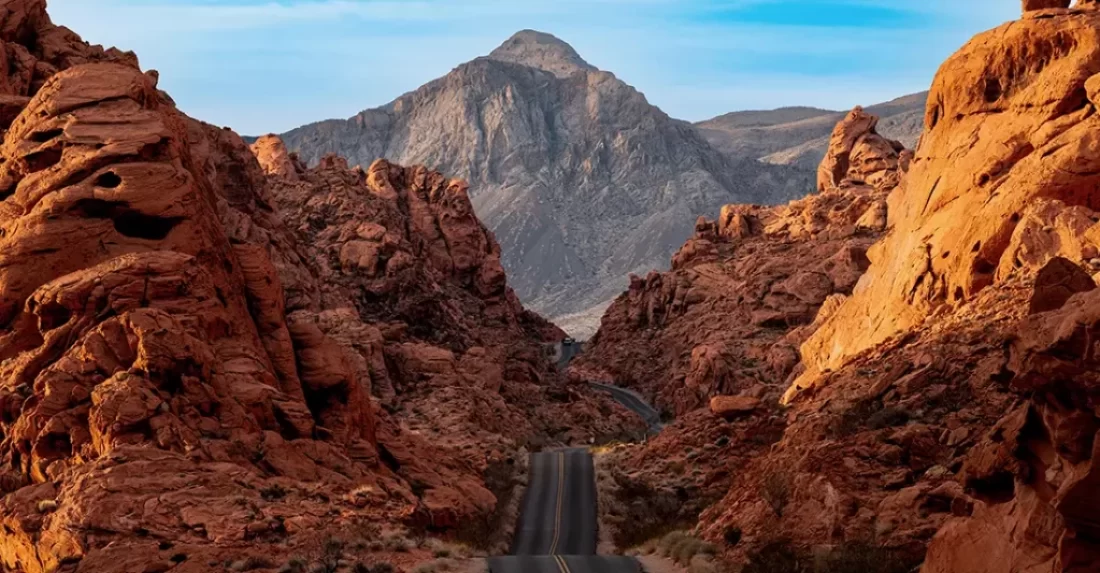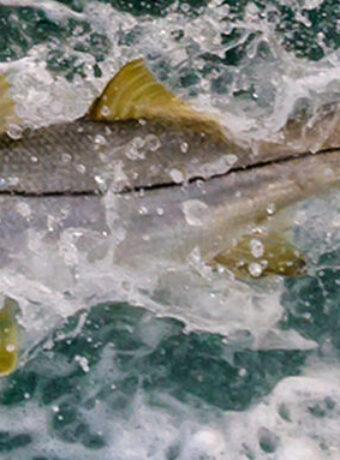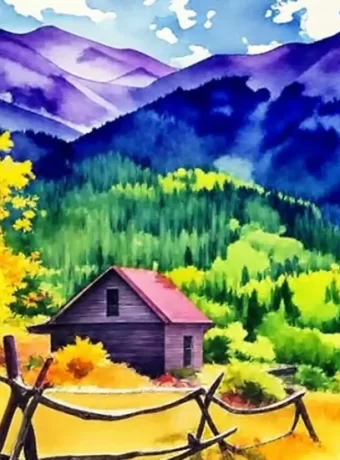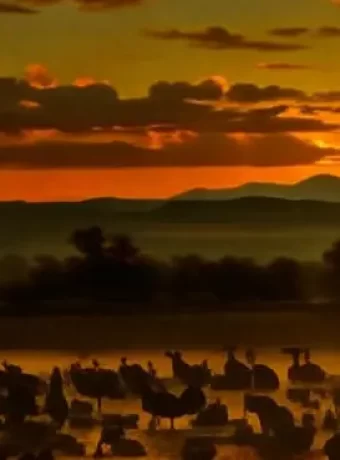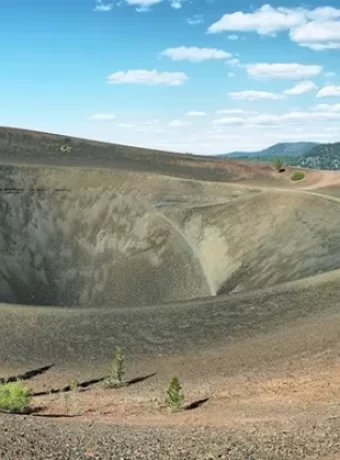Nevada State Parks: Hidden Gems and Adventures
Nevada State Parks and State Recreation Areas are more than just desert landscapes; they are a gateway to history, diverse ecosystems, and incredible adventures. Many visitors only see the famous spots, missing out on hidden gems that can elevate their trip. From lush forests to serene lakes and even fossilized remains, Nevada’s parks offer a surprising variety of experiences.
Table of Contents
Discovering the Diversity of Nevada’s State Parks
Most people picture Las Vegas and vast deserts when they think of Nevada. However, Nevada State Parks and State Recreation Areas reveal a different side of the state. They feature an amazing array of landscapes and experiences.
Did you know Berlin-Ichthyosaur State Park has fossilized remains of ancient marine reptiles? This park blends natural and human history. It features a preserved ghost town next to a fossil house showcasing these incredible creatures.
Nevada has plenty for those who love water. Lake Mead National Recreation Area is a boater’s, fisher’s, and swimmer’s dream. As the largest reservoir in the U.S., it provides many water-based activities.
Of course, we can’t forget Nevada’s iconic desert beauty. Valley of Fire State Park, with its red sandstone and ancient petroglyphs, is a must-see. It is like exploring a different world and it has also been the set for many films and shows.
Hidden Gems Among Nevada State Parks
While popular parks attract attention, some of Nevada’s lesser-known state parks offer great experiences with fewer people. For example, Cave Lake State Park is a 32-acre reservoir in eastern Nevada’s mountains.
It’s a haven for anglers and boaters. In winter, it’s great for ice fishing and cross-country skiing. Anglers can enjoy the park, which holds the state record for the largest German Brown Trout ever caught.
Another example is, Kershaw-Ryan State Park, a green oasis in the desert. With its spring-fed wading pool and gardens, it’s a refreshing surprise. These are both located in Lincoln County.
Unique Excursions in Valley of Fire State Park, Nevada
Nestled just an hour from Las Vegas, Valley of Fire State Park in Nevada is a geological wonderland that captivates adventurers with its vibrant red sandstone formations, ancient petroglyphs, and diverse desert landscapes. Spanning over 40,000 acres, this state park offers unique excursions that blend natural beauty, cultural history, and thrilling outdoor activities. Whether you’re a hiker, photographer, or history enthusiast, Valley of Fire promises unforgettable experiences. In this article, we’ll explore the top unique excursions in Valley of Fire State Park, optimized to help you plan your adventure and discover why this destination is a must-visit.
Hiking the Fire Wave Trail
One of the most iconic excursions in Valley of Fire is hiking the Fire Wave Trail, a 1.5-mile round-trip journey that showcases the park’s surreal, wave-like rock formations. The trail leads to a stunning display of swirling red, pink, and white sandstone, resembling an ocean frozen in time. This moderately easy hike is perfect for families and photographers, especially during sunrise or sunset when the colors are most vibrant.
Why It’s Unique: The Fire Wave’s unique geological patterns are a rare sight, making it one of the most photographed spots in the park. The trail is less crowded than other popular hikes, offering a serene experience.
Tips for Visitors:
-
Bring plenty of water, as the desert heat can be intense.
-
Wear sturdy shoes for the sandy and rocky terrain.
-
Check the park’s website for trail conditions, as flash floods can occasionally affect access.
Exploring Ancient Petroglyphs at Atlatl Rock
For a dive into the park’s cultural history, a visit to Atlatl Rock is a must. This site features well-preserved petroglyphs carved into the rock by Native American tribes over 2,000 years ago. A short, accessible staircase leads to the viewing platform, where you can marvel at symbols depicting animals, hunters, and spiritual motifs.
Why It’s Unique: Atlatl Rock offers a tangible connection to the ancient peoples who once inhabited the region, including the Ancestral Puebloans. The petroglyphs are among the best-preserved in Nevada, providing a glimpse into prehistoric life.
Tips for Visitors:
-
Bring binoculars to closely examine the carvings without touching them.
-
Visit early in the morning to avoid crowds and enjoy cooler temperatures.
-
Respect the site by staying on designated paths to preserve the fragile artifacts.
Photography Tour of Rainbow Vista
Rainbow Vista is a photographer’s paradise, offering panoramic views of multicolored sandstone formations and distant mountain ranges. This short, 1-mile trail is accessible and provides endless opportunities to capture the park’s vivid hues, especially during the golden hour.
Why It’s Unique: The vibrant palette of reds, oranges, and purples at Rainbow Vista creates a striking contrast against the clear Nevada sky. The area’s open vistas make it ideal for both amateur and professional photographers looking to capture the essence of the desert.
Tips for Visitors:
-
Use a polarizing filter to enhance the colors in your photos.
-
Plan your visit for early morning or late afternoon for the best lighting.
-
Check weather forecasts, as clear skies are ideal for photography.
Scenic Drive Through the Park
For those who prefer a more relaxed excursion, the Valley of Fire Scenic Drive is a fantastic way to experience the park’s highlights. This 10.5-mile loop takes you past landmarks like the Beehives, Elephant Rock, and the Seven Sisters rock formations. Along the way, you’ll find plenty of pullouts for photos and short walks.
Why It’s Unique: The scenic drive offers a comprehensive overview of the park’s diverse landscapes, from towering red rocks to lush desert oases. It’s perfect for visitors with limited time or mobility.
Tips for Visitors:
-
Start your drive at the Visitor Center to pick up a park map and learn about key stops.
-
Keep an eye out for wildlife, such as bighorn sheep, which are often spotted along the route.
-
Fill up your gas tank before entering the park, as there are no fuel stations inside.
Stargazing and Night Photography
Valley of Fire’s remote location and minimal light pollution make it an exceptional spot for stargazing and night photography. The park’s clear skies reveal a dazzling display of stars, planets, and the Milky Way, creating a magical experience for visitors.
Why It’s Unique: Unlike more urbanized areas, Valley of Fire offers pristine night skies, ideal for capturing long-exposure shots of celestial wonders. The park’s dramatic rock formations add a striking foreground to your photos.
Tips for Visitors:
-
Check the park’s hours, as camping or special permits may be required for after-dark activities.
-
Bring a tripod and a camera with manual settings for night photography.
-
Dress warmly, as desert nights can be surprisingly cold.
Guided Off-Road Jeep Tours
For an adrenaline-pumping adventure, consider booking a guided off-road Jeep tour. These tours take you deep into the park’s rugged backcountry, where you’ll explore hidden canyons, slot formations, and remote trails inaccessible to regular vehicles.
Why It’s Unique: Off-road tours provide access to lesser-known areas of the park, offering a thrilling and exclusive perspective. Knowledgeable guides share insights about the park’s geology, wildlife, and history.
Tips for Visitors:
-
Book tours in advance through reputable operators based in Las Vegas or Overton.
-
Wear sunscreen and a hat, as much of the tour is exposed to the sun.
-
Ask about photography-focused tours if you’re keen on capturing unique angles.
Planning Your Visit to Valley of Fire
To make the most of your Valley of Fire excursion, plan ahead:
-
Best Time to Visit: Spring (March-May) and fall (September-November) offer mild temperatures ideal for hiking and outdoor activities.
-
Entrance Fees: The park charges a $10 per vehicle fee for Nevada residents and $15 for non-residents (as of 2025).
-
Facilities: The Visitor Center provides maps, exhibits, and restrooms. There are also picnic areas and two campgrounds for overnight stays.
-
Safety: Always carry water, wear sun protection, and stay on marked trails to avoid getting lost.
Why Valley of Fire Should Be on Your Travel List
Valley of Fire State Park is more than just a desert destination—it’s a place where natural beauty, ancient history, and adventure converge. From hiking the Fire Wave to stargazing under pristine skies, the park’s unique excursions cater to a wide range of interests. Whether you’re seeking a peaceful retreat or an action-packed getaway, Valley of Fire delivers an experience that’s as unforgettable as its fiery landscapes.
Ready to explore? Plan your trip to Valley of Fire State Park today and discover the magic of Nevada’s oldest and most spectacular state park. For more information, visit the official Nevada State Parks website or check out travel blogs for updated tips and itineraries.
Outdoor Adventures in Nevada State Parks
Nevada State Parks and State Recreation Areas offer a wide range of activities. Whether you love thrills or calm nature walks, you’ll find something you enjoy. Big Bend of the Colorado is one of the many options available.
Hikers have endless choices. Lake Tahoe Nevada State Park trails offer stunning views. The Spooner Lake Trail is an easy 2.1-mile loop, while the Marlette Lake Trail offers better views.
Rock climbers will love Red Rock Canyon National Conservation Area. With more than 2,000 climbing routes, it is great for all skill levels. Visitors can enjoy activities at Spring Mountain Ranch State Park also located within Red Rock.
For water sports enthusiasts, Wild Horse State Recreation Area is great for boating, fishing, and windsurfing. Learn about Bass Fly Fishing in Nevada or plan a DIY Nevada Fly Fishing Trip. Rye Patch State Recreation Area is also another great option in Northern Nevada.
Preserving History in Nevada’s State Parks
Nevada’s state parks show off its natural beauty and rich history. Fort Churchill State Historic Park preserves a U.S. Army fort built in 1861. Visitors can see the adobe and imagine life during the Pony Express.
You can also visit Ward Charcoal Ovens State Historic Park. Here you can view the ovens up close and learn their history.
At Old Las Vegas Mormon Fort, you can visit the first permanent non-native settlement in Las Vegas Valley. This park reveals early pioneer life. Visitors get a taste of local history.
Camping and Lodging in Nevada State Parks
Many Nevada State Parks offer camping, letting visitors fully experience nature. There are options for every camper, from basic sites to RV spots. Check out options at places like South Fork State Recreation Area.
Cathedral Gorge State Park provides camping among clay spires and canyons. Its 22 sites have shade ramadas, great for hot days. Consider visiting Beaver Dam State Park as well.
Some parks rent cabins for those who prefer comfort. Cave Lake State Park offers cabins year-round. These are comfy bases for park adventures.
Stargazing in Nevada’s Dark Sky Parks
Nevada’s clear desert air makes it perfect for stargazing. Some state parks are Dark Sky Parks, providing great night sky views. Walker River State Recreation Area is a newly designated Dark Sky Park.
Great Basin National Park, though not a state park, is excellent for stargazing. Its slogan highlights the amazing celestial views.
Even parks without official Dark Sky status offer great stargazing. You can see the Milky Way while camping in Valley of Fire State Park. There is also Ice Age Fossils State Park for park visitors.
Planning Your Visit to Nevada State Parks
Preparation is important when visiting Nevada State Parks. The desert climate can be extreme, with hot summers and cold winters.
Check the park’s website or call for updates and restrictions. Some parks have limited services at times.
While day use doesn’t require reservations, booking campsites in advance is wise, especially during peak times. Use the Reserve Nevada system. You should also consider obtaining a Nevada State Parks Passport.
Bring water, sun protection, and proper clothing. Sturdy shoes are crucial in desert parks for navigating rocky terrain. Remember that certain online content may face a configuration error and appear as a request blocked.
| Park Name | Key Features | Activities |
|---|---|---|
| Valley of Fire State Park | Red sandstone formations, ancient petroglyphs | Hiking, camping, photography |
| Lake Tahoe Nevada State Park | Clear lake, mountain views | Hiking, boating, swimming, fishing |
| Cathedral Gorge State Park | Clay spires, slot canyons | Camping, hiking, exploring canyons |
| Great Basin National Park | Mountain scenery, Lehman Caves, dark skies | Hiking, cave tours, stargazing |
FAQs about Nevada State Parks and State Recreation Areas
What is the most popular state park in Nevada?
Valley of Fire State Park is very popular. People from all over visit for the red rocks and ancient petroglyphs.
How many state parks are in the state of Nevada?
Nevada boasts 27 state parks, each offering diverse scenery and fun. The state has lots of natural resources.
Is there a senior discount for Nevada State Parks?
Yes, Nevada residents 65 and older get a discount. They can buy an annual pass at a lower price.
How much does it cost to go to Valley of Fire State Park?
As of 2024, the entrance fee is $10 per vehicle for Nevada residents and $15 for non-residents. Camping costs extra. It’s a popular spot near Las Vegas
Conclusion of Nevada State Parks
Nevada State Parks and State Recreation Areas offer diverse wonders, history, and adventures. These parks show Nevada’s varied landscapes. From Valley of Fire’s red rocks to Lake Tahoe’s beauty and you can enjoy the state from Northern Nevada all the way down to the southern part of the state.
Nevada’s state parks suit everyone, offering thrilling activities, calm walks, or history. Explore beyond popular spots to find hidden gems. These places offer unique experiences.
Get ready to explore the Silver State’s treasures. Nevada’s state parks will amaze you. Be sure to obtain your Parks Passport.
